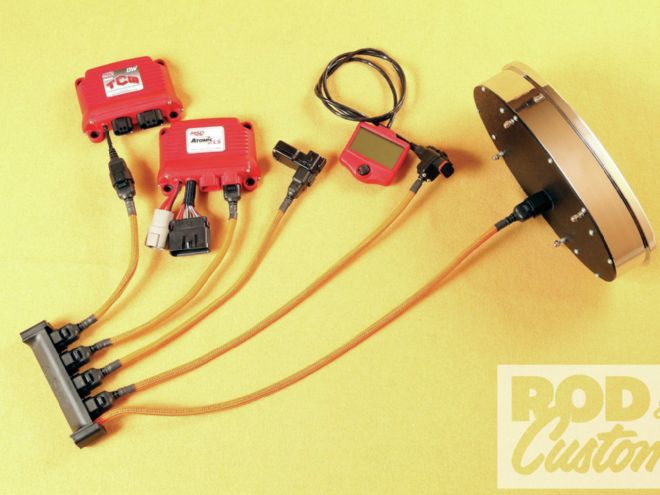
Remember the tomorrow that yesterday promised? If you weren't part of the digital revolution let me testify to its complexity.
Tomorrow by yesterday's standards required scientific procedure, doctoral knowledge, and meditative introspection. Then, and only then, would your computer recognize its printer.
But a funny if not inevitable thing happened in computing over the past dozen or so years. Engineers began writing software that took the user into consideration. Instead of relying on us to fiddle with delicate registry values, programs sort of said, "Here, let me do that for you." Novel, right? Geeks are competitive too so it was inevitable that a few vanguards actually acknowledged the presence of other programs as they wrote their software code. So rather than bicker with each other, programs from different manufacturers more often than not work with each other.
This compatibility has mind-boggling consequences. You know those things that we carry in our pockets to make phone calls? Recently my pal Troy Ladd showed me with child-like exuberance how he could use his to control the heater, stereo, and hot tub at his Burbank home from where we stood on the floor of the SEMA Show.
So what does the computer revolution have to do with our old cars? Pretty much everything really. Remember when electronic fuel injection was the tomorrow that yesterday promised? I do, and I also remember what it took to adapt it to an old car. I remember biting my fingernails as Ladd fiddled with the ECU commanding the Ford Sequential Electronic Fuel Injection on the 5.0 engine that he transplanted into his '65 Mustang. And just like software from that time the system operated completely ignorant to everything around it.
But the funny and inevitable thing that tamed the home computer and integrated our phones, thermostats, and stereos, also transformed the cars we drive. A Control Area Network (CAN) busing system integrated the various components within modern vehicles. But this busing system does it in a curious way: by decentralizing the electrical system in semi-autonomous mini computers or modules. They connect not by snakes of bundled cables that go to a single source or brain but by a couple tiny wires that thread among the various modules.
Think of these modules as populated by tiny people. They share a library made of the system components' commands and responses. And they communicate through a telephone line. So when you pull the headlight switch the tiny person in the dash module references the command in the library and sends a code over the line. When the other modules hear this code over the line they all go to their libraries and research the response. In this case the little person in the module mounted at the core support recognizes that the code pertains to one of his functions so he sends the electricity down the appropriate wire. The headlights turn on.
And like the phone/computer/Internet/thermostat example earlier, the possibilities are pretty much endless. Give the modules the appropriate library and they can control or report from pretty much anything from the simplest switches to the most complicated sensors and displays.
Naturally there's a hitch: unlike the early engine-management systems these CAN systems don't readily transplant. Remember the extra bit of code that engineers wrote in to their software to harmonize it with other software? The modules require that same sort of hand holding and at this point programming them is beyond the scope of almost everyone in the community.
But it's not beyond the scope of everybody. In fact Todd Petersen knows CAN systems very well.
MSD acquired Petersen when it bought his engine-management company. He took over Racepack, a data-acquisition company MSD acquired soon before it bought his shop. Here's the thing: Racepack knows CAN through its founder, Spencer Eisenbarth, and has used the system for 15 years—in fact it's sold more than 100,000 CAN-based components. And because Petersen speaks CAN he found the common ground among the various controllers.
Consider Brainwave, the CAN fruit of his team's efforts. Functionally, Brainwave is the same as CAN system in a modern production vehicle. In fact, it communicates largely by parameters defined by SAE J1939, the established, reliable, and ubiquitous communication system the OEMs use.
But that's about where the similarities end. "The problem with any OEM protocol is the list of components in the vehicle must be pre-defined in order to set up the CAN network, the aftermarket is not like that, every vehicle is different, he indicates. "Brainwave is a proprietary protocol in itself but it's built on the best of the best existing protocols."
This hybrid protocol system gives Brainwave a flexibility a production CAN system could only dream of. For one thing Brainwave's library contains definitions of components that enthusiasts are most likely to use in their custom-built cars. For example, MSD kicked things off by stocking its library with the codes specific to its engine-management and transmission controllers. So if you run both of those all you have to do is plug the transmission controller into the engine-management system and they'll trade information like engine speed, vehicle speed, throttle position, and so forth. And because these modules reduce wiring to a single cable connection there's no bundle of snakes going back and forth. Just a thin cable among the components and they work in unison. Novel, ain't it?
That's only the start, too. MSD actively courts other manufacturers to submit their respective CAN-based controllers for stocking in the Brainwave library. For example, when Vintage Air created a CAN-based controller for its climate systems it submitted the controller to Petersen's team. It then associated the controller's operating details with the Brainwave database. Because the controller has access to the CAN bus it can tell the engine controller to engage the A/C compressor, raise the idle speed, and turn on the cooling fan if necessary.
"That's what makes Brainwave infinitely universal," Petersen explains. "We didn't try to think ahead of what every manufacturer was going to do. As long as the features are registered in the database, we know what to do with it. So over time and after we add more equipment, then the database is going to get really huge." As of our interview Petersen was integrating RideTech's suspension system controller to the Brainwave library. Dakota Digital already has its controller in the library, making it a plug-and-play deal—no extra wiring required beyond a simple connector.
We know we sound like we're overselling it but this isn't the only cool thing about Brainwave. It differs so greatly from old systems that it dispenses entirely with the computer. "Back when we were using PCs to do everything the customer on the other end of the line usually had their kid explaining how to work the computer," Petersen explains. "The customer knows how the car works and the kid knows how the computer works so it got confusing pretty quickly." As he explains, mobile devices like phones and tablets have simplified things. "More people are comfortable with mobile devices than they are with computers."
So in other words if you can make a phone call you can set up a Brainwave system. And the term setting up is more complicated than the actual process. "Once we register those (controllers) in the Brainwave database that information goes straight into the mobile application," Todd says. "When you link the device with Brainwave the mobile application looks at all of the things that it discovers on the network and finds them on the database. It says, ‘Oh look; here's a Vintage Air ABC and a Dakota Digital XYZ. One has the information that the other needs so I'm going to play matchmaker.'" And with that the components associate with each other.
That's a lot of information to digest so let's take the opportunity to recap it. Brainwave represents a CAN busing system for the aftermarket. It replaces tedious wiring and programming with plug-and-play performance. Its catalog increases every time a manufacturer submits its CAN controllers to the library. To make it all work together all you have to do is basically turn on an app installed on your phone or tablet.
Does it sound too good to be true? Of course it does. But it isn't. This may be the April issue but this is no fool's errand or gag. This is real.
Brainwave offers more than plug-and-play simplicity. It gives us the tomorrow that yesterday promised. Actually that's not totally accurate: Brainwave gives us the tomorrow that yesterday couldn't even dream of.
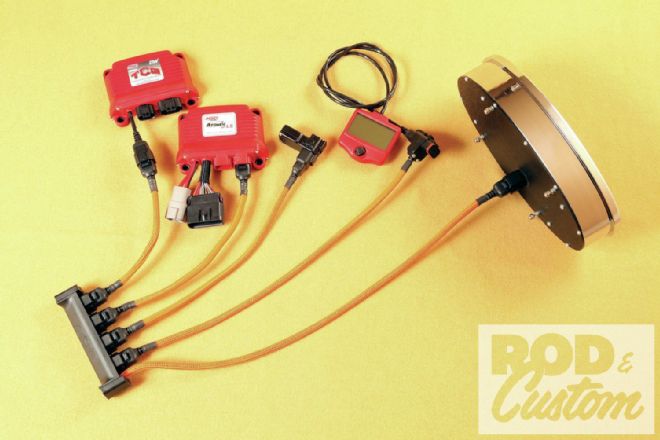 This image isn’t dramatic until you realize that this is how the various controllers in a CAN busing network connect. Naturally this ignores the other wires that connect the controllers with their respective components but the controllers communicate by those small, universal cables.
This image isn’t dramatic until you realize that this is how the various controllers in a CAN busing network connect. Naturally this ignores the other wires that connect the controllers with their respective components but the controllers communicate by those small, universal cables.
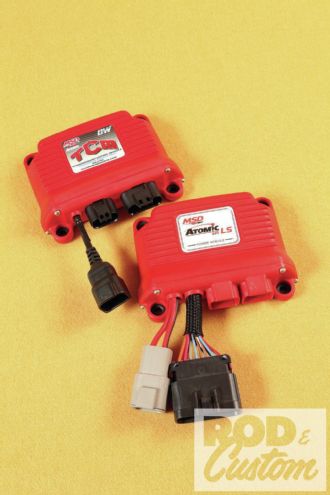 The backbone of the Brainwave system is a CAN controller built into MSD’s Atomic injection ECUs or transmission controllers. A system could have either one or both of these controllers and a number of other company’s controllers.
The backbone of the Brainwave system is a CAN controller built into MSD’s Atomic injection ECUs or transmission controllers. A system could have either one or both of these controllers and a number of other company’s controllers.
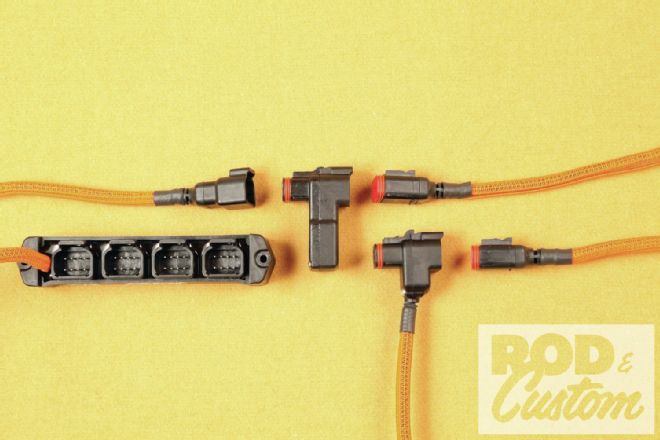 The connector ports match for a reason: with very few exceptions each one fits with the others. That makes any component fit within the system at any point with a connector. Controllers can go in line or at the end of their own dedicated line.
The connector ports match for a reason: with very few exceptions each one fits with the others. That makes any component fit within the system at any point with a connector. Controllers can go in line or at the end of their own dedicated line.
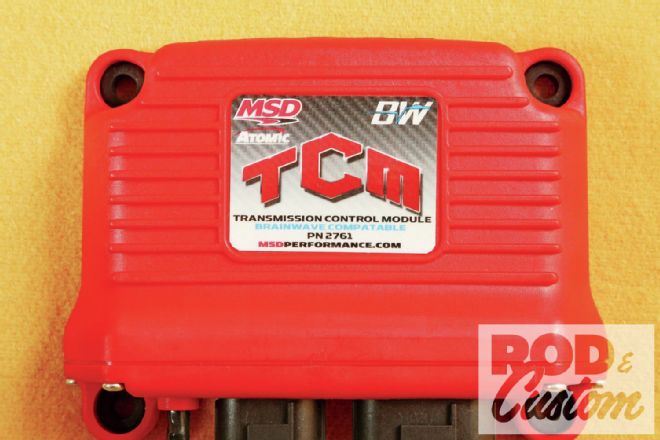 The backbone of the Brainwave system is a CAN controller built into MSD’s Atomic injection ECUs or transmission controllers. A system could have either one or both of these controllers and a number of other company’s controllers.
The backbone of the Brainwave system is a CAN controller built into MSD’s Atomic injection ECUs or transmission controllers. A system could have either one or both of these controllers and a number of other company’s controllers.
 Brainwave corresponds with any controller that MSD associates with its library. This Dakota Digital VHX panel is but one of inevitably dozens of components or component controllers that will populate the Brainwave library.
Brainwave corresponds with any controller that MSD associates with its library. This Dakota Digital VHX panel is but one of inevitably dozens of components or component controllers that will populate the Brainwave library.
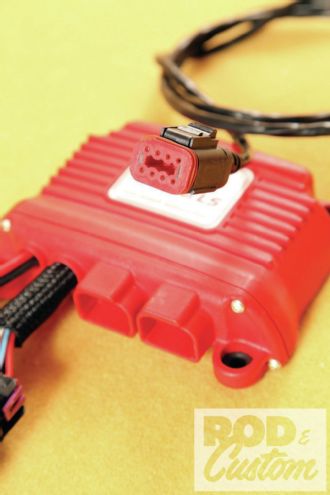 The cables terminate at these universal eight-pin connectors. Installing components is almost insultingly easy: just push the connector into the component until it clicks.
The cables terminate at these universal eight-pin connectors. Installing components is almost insultingly easy: just push the connector into the component until it clicks.
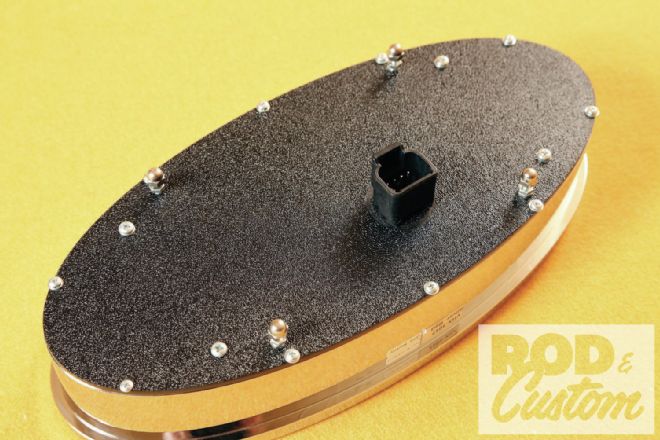 That Dakota VHX panel communicates with the rest of the bus by the same eight-pin plug that all other components use. Access the system with the app and it will recognize and download the driver that makes the gauges work without any additional wires or tweaking.
That Dakota VHX panel communicates with the rest of the bus by the same eight-pin plug that all other components use. Access the system with the app and it will recognize and download the driver that makes the gauges work without any additional wires or tweaking.
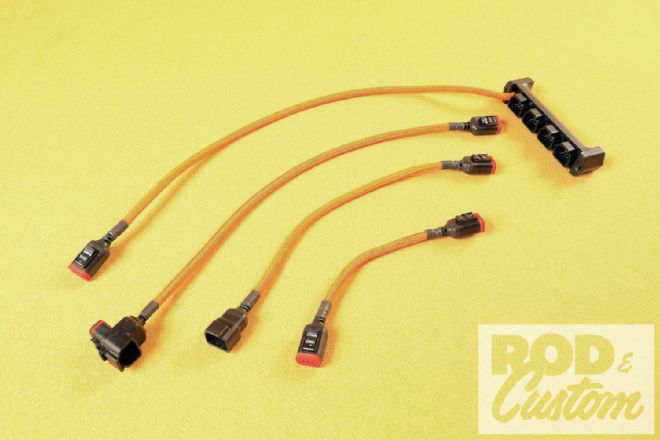 MSD offers an array of connection options. It has three basic cable styles: one with males connectors on both ends, another with a female on one end, and yet another with a tee (right). The company also offers these cables in various lengths to facilitate pretty much any installation location. Note the hub in the background.
MSD offers an array of connection options. It has three basic cable styles: one with males connectors on both ends, another with a female on one end, and yet another with a tee (right). The company also offers these cables in various lengths to facilitate pretty much any installation location. Note the hub in the background.
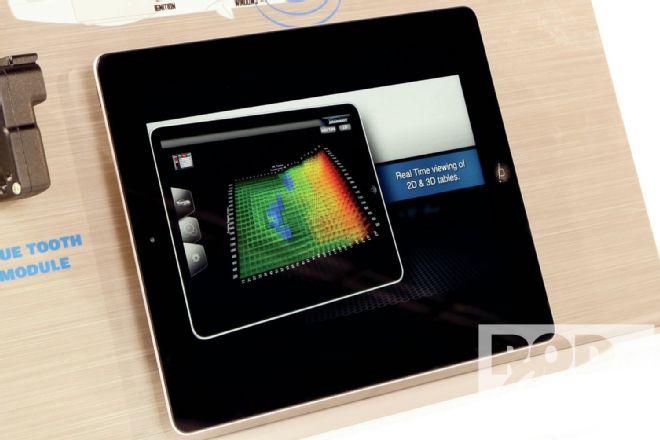 Here’s the Brainwave app working on a conventional tablet. This screen capture illustrates the app’s tuning capacity. It can serve as a selection tool to make a crate or production engine run as is; however, it can just as easily access the tuning parameters within the Atomic system. With it you can specify a different component or even manipulate the fuel and spark maps for a custom tune.
Here’s the Brainwave app working on a conventional tablet. This screen capture illustrates the app’s tuning capacity. It can serve as a selection tool to make a crate or production engine run as is; however, it can just as easily access the tuning parameters within the Atomic system. With it you can specify a different component or even manipulate the fuel and spark maps for a custom tune.
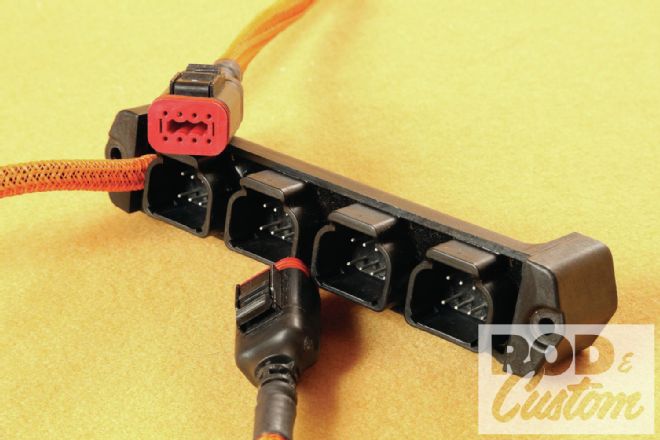 The hub testifies to the complexity that the Brainwave system will accommodate. It splits one line into five ports: one male and four female. The hub is “dumb” in the sense that it serves no purpose other than connecting terminals. It’s merely brass wires potted in plastic with a plug and sockets.
The hub testifies to the complexity that the Brainwave system will accommodate. It splits one line into five ports: one male and four female. The hub is “dumb” in the sense that it serves no purpose other than connecting terminals. It’s merely brass wires potted in plastic with a plug and sockets.
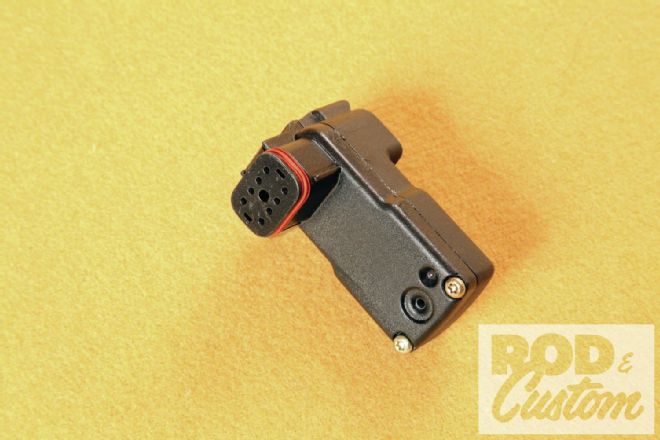 Apps installed on mobile devices access Brainwave by Bluetooth, the wireless technology standard created to transmit data over short distances. This dongle basically turns Brainwave into a radio that tunes in to your mobile device like a smart phone or tablet.
Apps installed on mobile devices access Brainwave by Bluetooth, the wireless technology standard created to transmit data over short distances. This dongle basically turns Brainwave into a radio that tunes in to your mobile device like a smart phone or tablet.